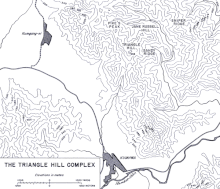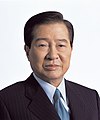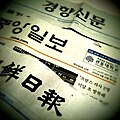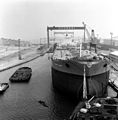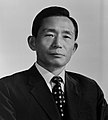 |
환영합니다! / Welcome To The South Korea Portal!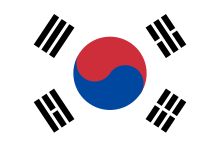 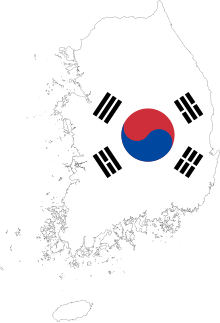 South Korea, officially the Republic of Korea (ROK), is a country in East Asia. It constitutes the southern half of the Korean Peninsula and borders North Korea along the Korean Demilitarized Zone; though it also claims the land border with China and Russia. The country's western border is formed by the Yellow Sea, while its eastern border is defined by the Sea of Japan. South Korea claims to be the sole legitimate government of the entire peninsula and adjacent islands. It has a population of 51.96 million, of which half live in the Seoul Capital Area, the ninth most populous metropolitan area in the world. Other major cities include Busan, Daegu, and Incheon. The Korean Peninsula was inhabited as early as the Lower Paleolithic period. Its first kingdom was noted in Chinese records in the early 7th century BCE. After the unification of the Three Kingdoms of Korea into Silla and Balhae in the late 7th century, Korea was ruled by the Goryeo dynasty (918–1392) and the Joseon dynasty (1392–1897). The succeeding Korean Empire (1897–1910) was annexed in 1910 into the Empire of Japan. Japanese rule ended following Japan's surrender in World War II, after which Korea was divided into two zones: a northern zone, which was occupied by the Soviet Union, and a southern zone, which was occupied by the United States. After negotiations on reunification failed, the southern zone became the Republic of Korea in August 1948, while the northern zone became the communist Democratic People's Republic of Korea the following month. In 1950, a North Korean invasion began the Korean War, which ended in 1953 after extensive fighting involving the American-led United Nations Command and the People's Volunteer Army from China with Soviet assistance. The war left 3 million Koreans dead and the economy in ruins. The authoritarian First Republic of Korea led by Syngman Rhee was overthrown in the April Revolution of 1960. However, the Second Republic failed to control the revolutionary fervor. The May 16 coup of 1961 led by Park Chung Hee put an end to the Second Republic, signaling the start of the Third Republic in 1963. South Korea's devastated economy began to soar under Park's leadership, recording one of the fastest rises in average GDP per capita. Despite lacking natural resources, the nation rapidly developed to become one of the Four Asian Tigers based on international trade and economic globalization, integrating itself within the world economy with export-oriented industrialization. The Fourth Republic was established after the October Restoration of 1972, in which Park wielded absolute power. The Yushin Constitution declared that the president could suspend basic human rights and appoint a third of the parliament. Suppression of the opposition and human rights abuse by the government became more severe in this period. Even after Park's assassination in 1979, the authoritarian rule continued in the Fifth Republic led by Chun Doo-hwan, which violently seized power by two coups and brutally suppressed the Gwangju Uprising. The June Democratic Struggle of 1987 ended authoritarian rule, forming the current Sixth Republic. The country is now considered among the most advanced democracies in continental and East Asia. (Full article...) Selected article -Sun Myung Moon (Korean: 문선명; Hanja: 文鮮明; born Moon Yong-Myeong; 6 January 1920 – 3 September 2012) was a Korean religious leader, also known for his business ventures and support for conservative political causes. A messiah claimant, he was the founder of the Unification Church, whose members consider him and his wife Hak Ja Han to be their "True Parents", and of its widely noted "Blessing" or mass wedding ceremonies. The author of the Unification Church's religious scripture, the Divine Principle, he was an anti-communist and an advocate for Korean reunification, for which he was recognized by the governments of both North and South Korea. Businesses he promoted included News World Communications, an international news media corporation known for its American subsidiary The Washington Times, and Tongil Group, a South Korean business group (chaebol), as well as other related organizations. Moon was born in what is now North Korea. When he was a child, his family converted to Christianity. In the 1940s and 1950s, he was imprisoned multiple times by the North and South Korean governments during his early new-religious ministries, formally founding the Holy Spirit Association for the Unification of World Christianity, simply known as the Unification Church, in Seoul, South Korea, in 1954. The Unification Church teaches conservative, heterosexual family-oriented values from new interpretations of the Christian Bible mixed with theology from Moon's own text, the Divine Principle. In 1971, Moon moved to the United States and became well known after giving a series of public speeches on his beliefs. In the 1982 case United States v. Sun Myung Moon, he was found guilty of willfully filing false federal income tax returns and sentenced to 18 months in federal prison. His case generated protests from clergy and civil libertarians, who said that the trial was biased against him. (Full article...) Selected image South Korea is located in East Asia, on the southern half of the Korean Peninsula jutting out from the far east of the Asian land mass. The only country with a land border to South Korea is North Korea, lying to the north with 238 kilometres (148 mi) of border running along the Korean Demilitarized Zone. South Korea is mostly surrounded by water and has 2,413 kilometres (1,499 mi) of coast line along three seas; to the west is the Yellow Sea, to the south is the East China Sea, and to the east is the East Sea. Geographically, South Korea's land mass is approximately 100,032 square kilometres (38,623 sq mi). 290 square kilometres (110 sq mi) of South Korea are occupied by water. The approximate coordinates are 37° North, 127° 30 East. Notable islands include Jeju Island (Jejudo), Ulleung Island (Ulleungdo), and Liancourt Rocks (Dokdo). More did you know -
In the news
This is a Good article, an article that meets a core set of high editorial standards.
The Battle of Triangle Hill, also known as Operation Showdown or the Shangganling Campaign (Chinese: 上甘岭战役; pinyin: Shànggānlǐng Zhànyì), was a protracted military engagement during the Korean War. The main combatants were two United Nations (UN) infantry divisions, with additional support from the United States Air Force, against elements of the Chinese People's Volunteer Army (PVA) 15th and 12th Corps. The battle was part of UN attempts to gain control of the "Iron Triangle" and took place from 14 October to 25 November 1952. The immediate UN objective was Triangle Hill (), a forested ridge of high ground 2 kilometers (1.2 mi) north of Gimhwa-eup. The hill was occupied by the veterans of the PVA's 15th Corps. Over the course of nearly a month, substantial US and Republic of Korea Army (ROK) forces made repeated attempts to capture Triangle Hill and the adjacent Sniper Ridge. Despite clear superiority in artillery and aircraft, the escalating UN casualties resulted in the attack being halted after 42 days of fighting, with PVA forces regaining their original positions. (Full article...) General images -The following are images from various South Korea-related articles on Wikipedia.
Did you know (auto-generated)
WikiProjectsSee WikiProject Korea for collaborating on South Korea topics, and more broadly, on all things Korea-related. South Korea topics
CategoriesAdministrative divisions of South Korea
Related portalsEast Asia Associated WikimediaThe following Wikimedia Foundation sister projects provide more on this subject:
Web resources
SourcesDiscover Wikipedia using portals |

